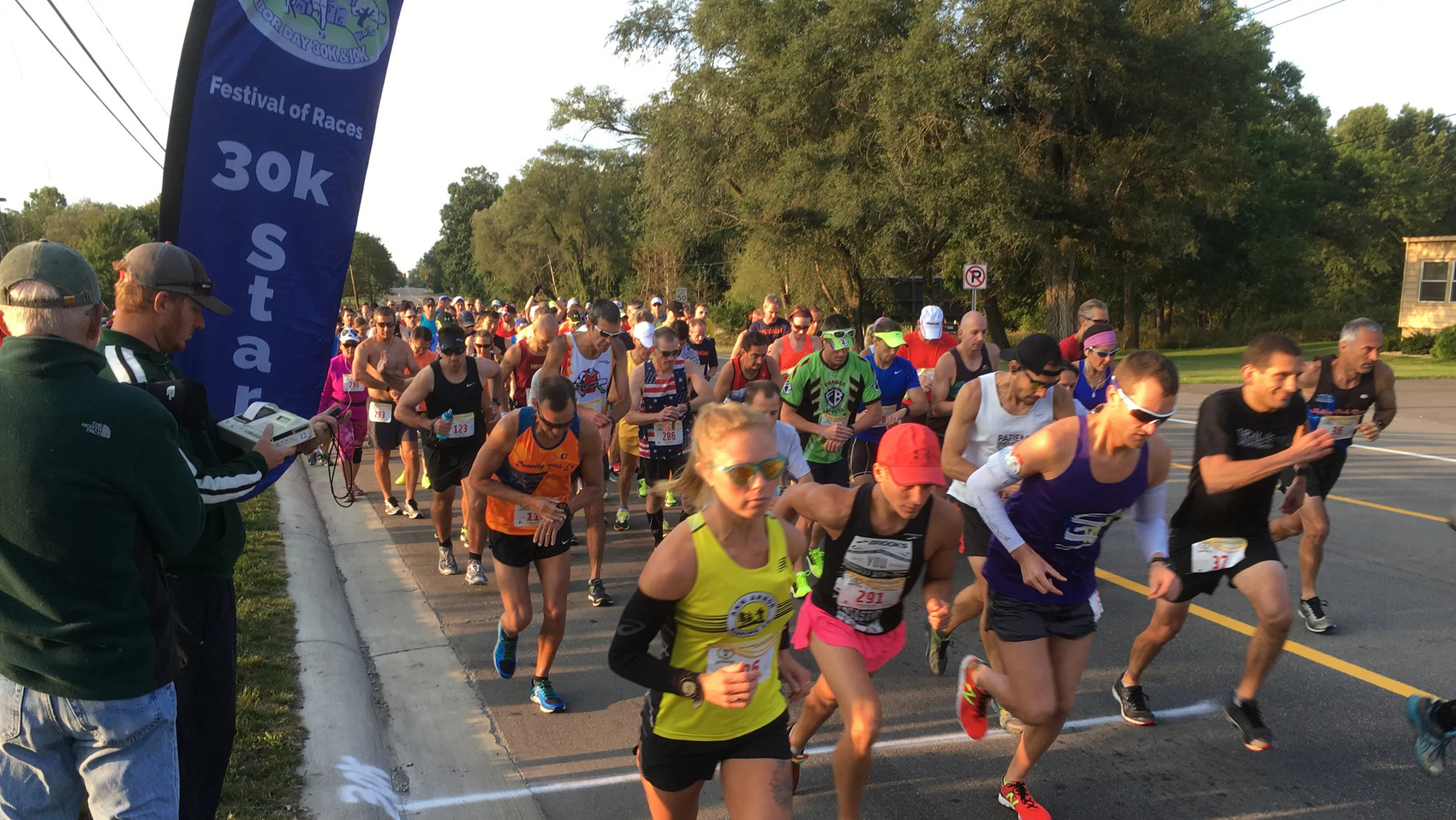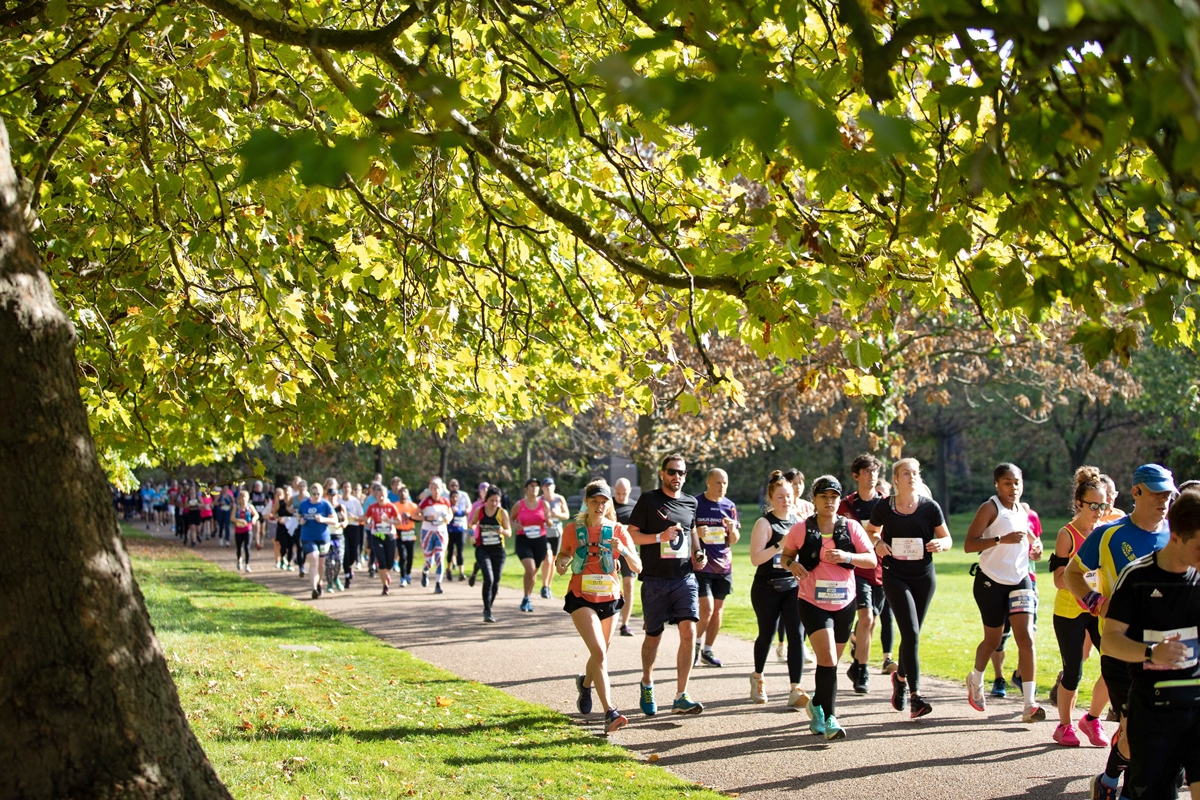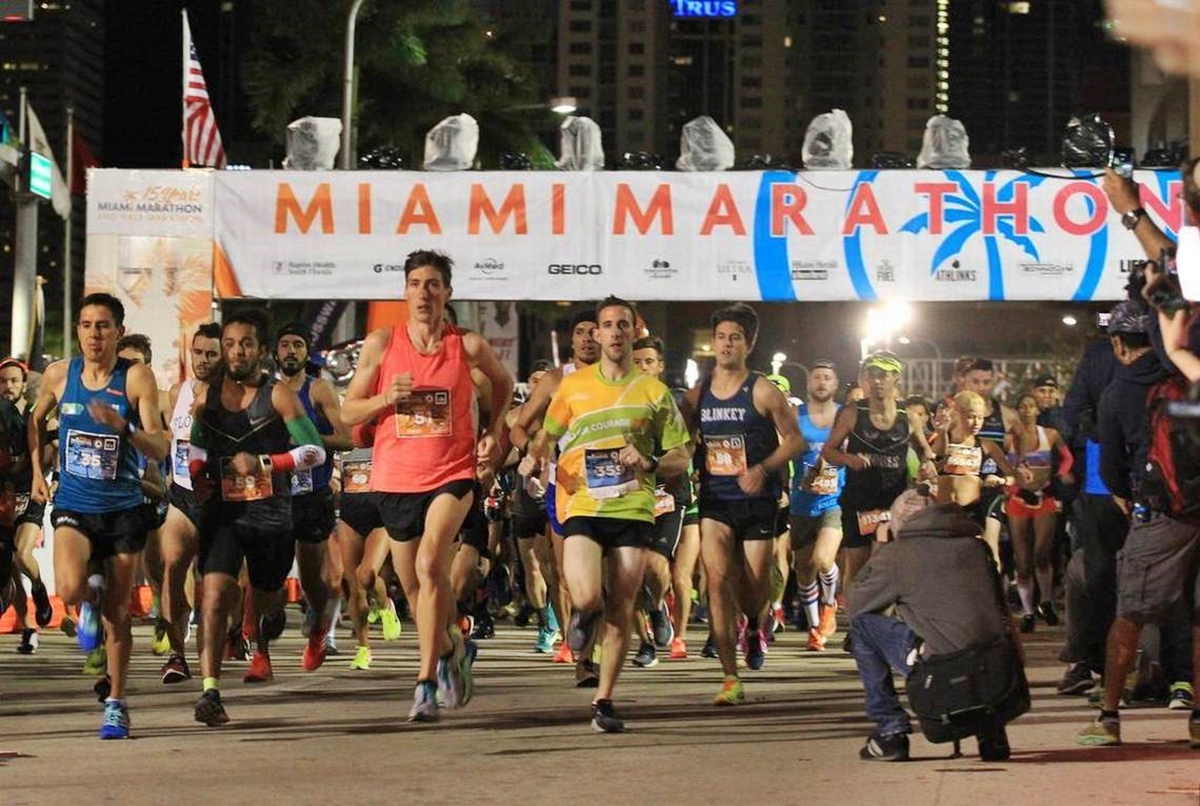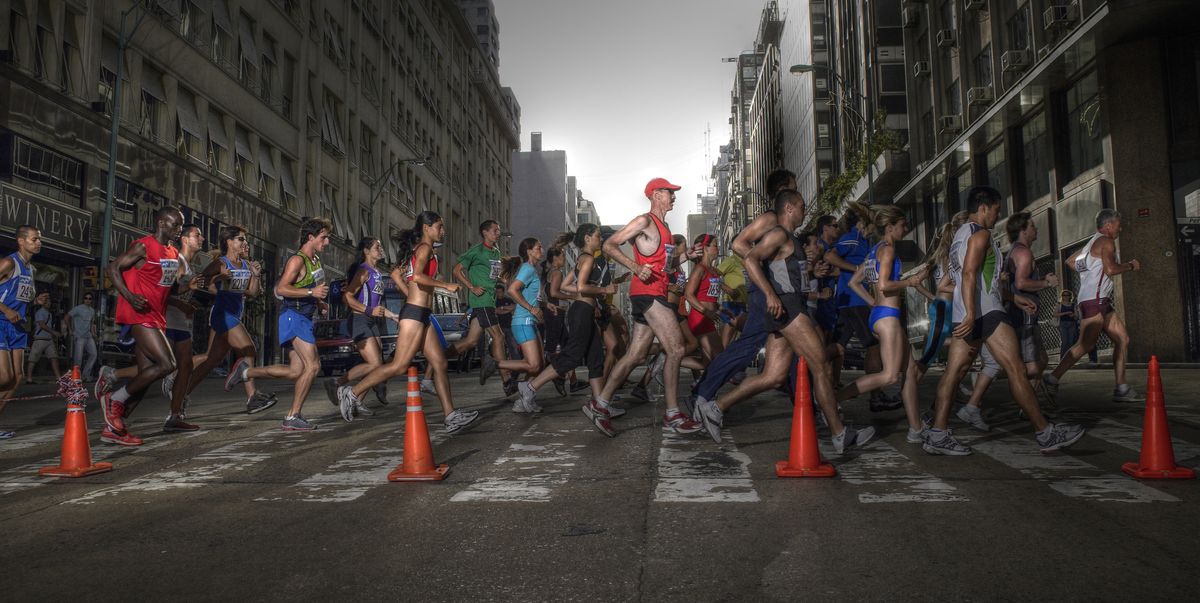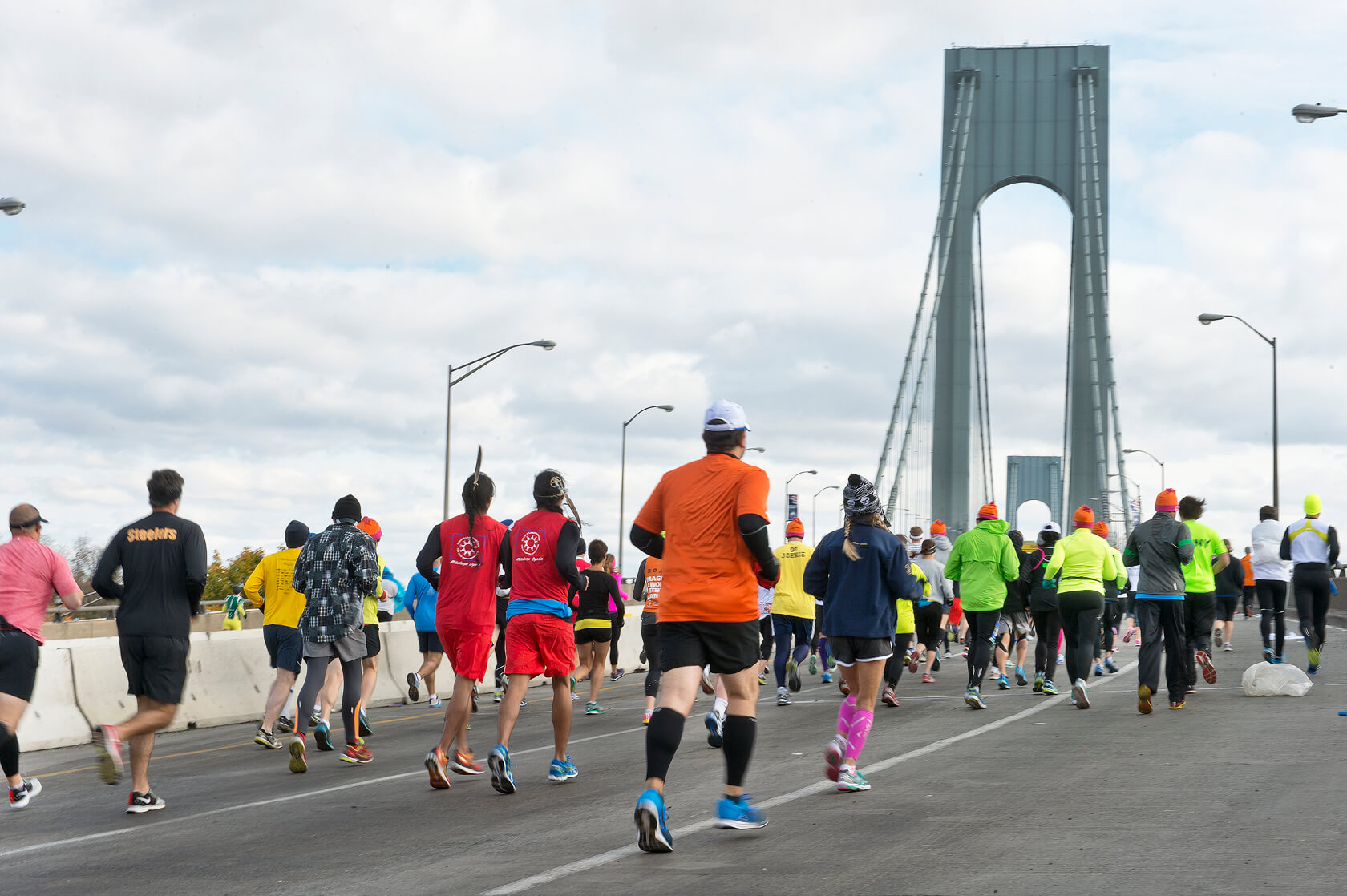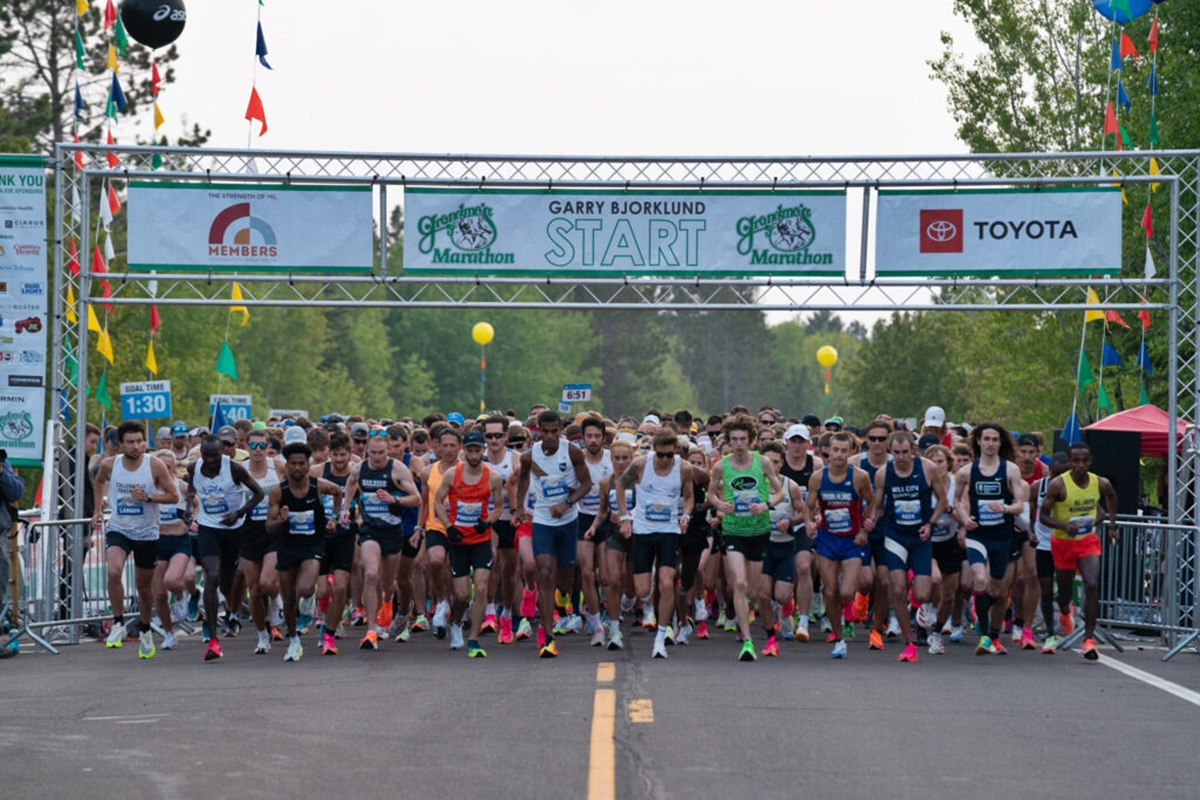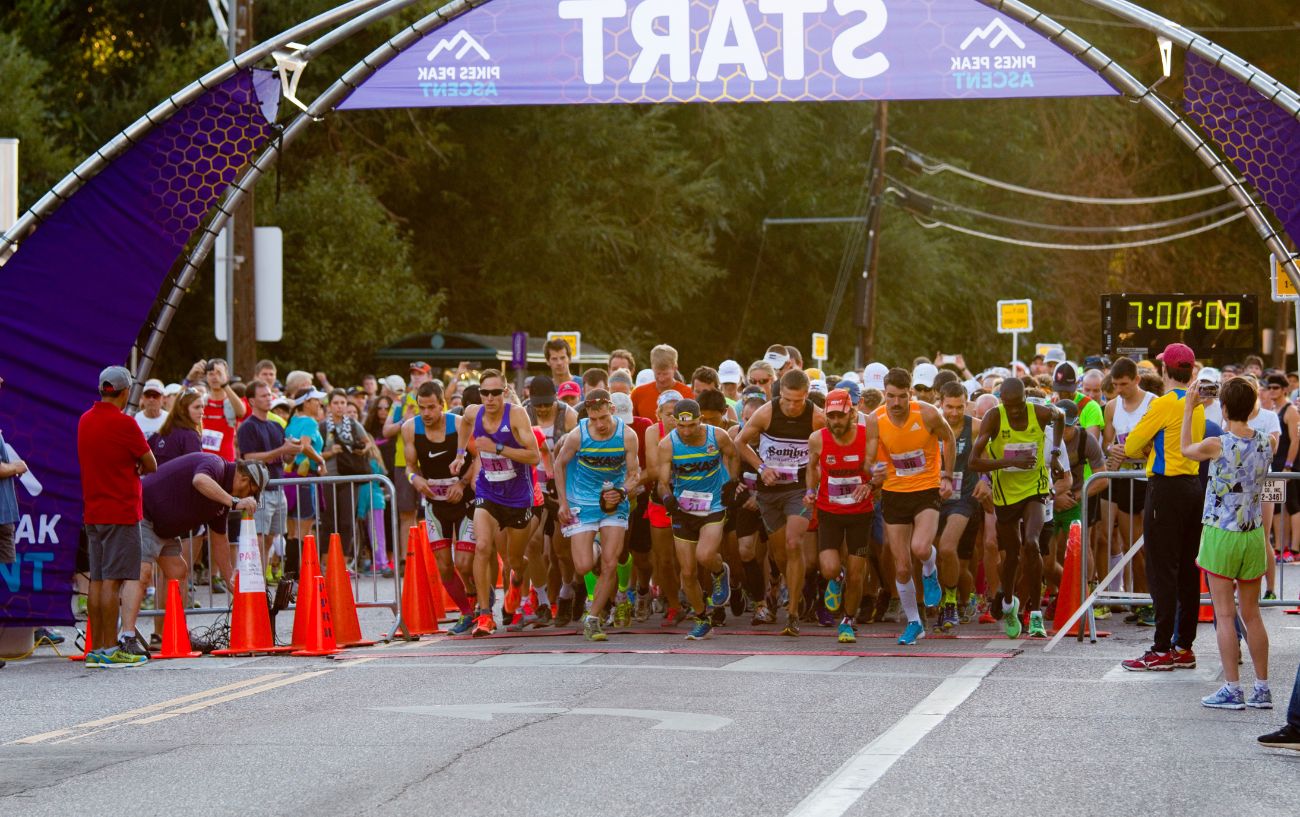

Featured
How Many People Have Run A Half Marathon
Modified: January 22, 2024
Find out about the number of people who have successfully completed a half marathon in this featured article.
Introduction
The half marathon, a road race covering a distance of 13.1 miles or 21.1 kilometers, has become increasingly popular in recent years. This endurance event combines the challenges of long-distance running with the accessibility of a shorter race. Runners from all walks of life have taken up the challenge of completing a half marathon, pushing themselves to new physical and mental limits.
Participating in a half marathon is not just about crossing the finish line; it is a journey of self-discovery, perseverance, and personal growth. The race represents a significant accomplishment for many, regardless of their running background.
What sets the half marathon apart from other races is its ability to attract both seasoned runners and newcomers to the sport. Its popularity has seen a remarkable increase over the years, with more and more people lacing up their running shoes to take on the challenge.
In this article, we will explore the definition of a half marathon, examine the drivers behind its growth in popularity, delve into the demographics of half marathon runners, discuss the training required to complete a half marathon, and highlight the benefits and challenges associated with running such a race.
Whether you’re a seasoned runner or new to the sport, understanding the allure of the half marathon can inspire you to take on the challenge yourself. So, put on your running shoes, stretch those muscles, and join us as we explore the world of half marathon running!
Definition of a Half Marathon
A half marathon is a long-distance running race that involves covering a distance of 13.1 miles or 21.1 kilometers. It falls between the shorter 10K (6.2 miles) and the full marathon (26.2 miles) in terms of distance. The half marathon is a common race distance that attracts a diverse range of runners, from beginners to elite athletes.
The concept of the half marathon dates back to the early 20th century, with the first organized half marathon believed to have taken place in Oxford, England, in 1908. However, it wasn’t until the late 20th century that the half marathon gained widespread popularity and became a stand-alone race distance.
Unlike the track and field events in athletics, which are often measured in meters, road races, including the half marathon, are typically measured in miles or kilometers. The course for a half marathon can vary, with routes often taking participants through city streets, countryside, or a combination of both.
Half marathons are usually organized by running clubs, event management companies, or charities, and they often attract a large number of participants. The race experience can vary, from big-city events with thousands of participants to smaller, local races with a more intimate atmosphere.
One unique characteristic of the half marathon is its accessibility. While a full marathon requires a significant amount of training and preparation, completing a half marathon is seen as a more attainable goal for many individuals. Whether you’re a beginner looking to challenge yourself or an experienced runner aiming for a personal best, the half marathon offers a rewarding experience for runners of all levels.
Now that we’ve defined the half marathon and its place in the world of running, let’s explore why participation in these races has been steadily increasing over the years.
Growth in Half Marathon Participation
Over the past few decades, there has been a significant growth in the participation of half marathons worldwide. What was once considered an elite race distance has now become more accessible and appealing to a larger demographic of runners. This rise in popularity can be attributed to several factors.
Firstly, the half marathon offers a middle ground for runners who want to challenge themselves but find the full marathon distance too intimidating. With proper training and preparation, completing a half marathon is a realistic goal for many individuals, making it an attractive option for those seeking a new running challenge.
The increase in half marathon events and race organizations has also contributed to the growth in participation. Nowadays, it is not uncommon to find multiple half marathons being held in a single city or region throughout the year. This abundance of race opportunities gives runners the flexibility to choose a race that suits their schedule and location, further encouraging participation.
In addition, the rise of social media has played a significant role in promoting and popularizing half marathons. Runners often share their training journey, race experiences, and achievements on platforms like Instagram, Facebook, and running-specific communities. This digital sharing fosters a sense of community and inspiration among runners, motivating others to take up the challenge and participate in half marathons.
Health and wellness trends have also had an impact on the growth of half marathon participation. As more people become aware of the importance of regular exercise and leading an active lifestyle, the desire to participate in events that promote physical fitness has increased. Half marathons provide a goal-driven incentive for individuals to train, improve their running ability, and showcase their progress on race day.
Furthermore, the charitable aspect associated with many half marathons has been a driving force behind their popularity. Numerous races partner with charitable organizations, allowing participants to use their race experience as a platform to raise funds and awareness for important causes. This combination of physical challenge and philanthropy gives participants a deeper sense of purpose and fulfillment when taking part in a half marathon.
As we can see, there are several factors contributing to the growth in half marathon participation. The accessibility, abundance of race events, social media influence, health and wellness trends, and charitable opportunities have all played a role in attracting a diverse group of individuals to take on the challenge of running a half marathon.
Factors Influencing Half Marathon Participation
The decision to participate in a half marathon is influenced by various factors, ranging from personal motivations to external factors. Understanding these influences can shed light on why individuals choose to take on the challenge of running a half marathon. Let’s explore some of the key factors that influence half marathon participation.
Personal Goals and Motivations: Many individuals who sign up for a half marathon do so because they have set personal goals related to their fitness, weight loss, or overall well-being. The half marathon serves as a tangible target that motivates individuals to train and improve their running ability.
Social Support and Accountability: The support and encouragement from friends, family, and running communities can play a significant role in influencing participation. Joining a training group or having a running buddy can provide the necessary support and accountability to stay committed to the training program and ultimately participate in the race.
Race Atmosphere and Experience: The allure of the race day experience, including the unique atmosphere, cheering spectators, and camaraderie among fellow runners, can be highly influential. The energy and excitement surrounding a half marathon can inspire individuals to take part and be a part of something special.
Race Location and Travel: The location of a half marathon can be a key factor in attracting participants. Many races are held in picturesque destinations or iconic cities, offering participants the opportunity to combine their race experience with a memorable travel adventure. The allure of exploring a new city or running in a beautiful setting can be a strong motivator.
Training and Preparedness: Half marathon participation requires a certain level of training and preparedness. Individuals who feel they have put in the necessary effort to train and are physically prepared are more likely to participate. Training programs and resources available online or through running clubs can provide the guidance and structure needed to feel comfortable and confident in taking on the challenge.
Peer Influence and Inspiration: The influence and inspiration from peers who have previously completed a half marathon can be a significant factor in deciding to participate. Hearing about the personal achievements and memorable experiences of others can ignite a desire to experience the same sense of accomplishment and fulfillment.
Charitable Causes: Many half marathons partner with charitable organizations, allowing participants to run for a cause and raise funds and awareness. Aligning the race participation with a meaningful cause can provide participants with a greater sense of purpose and motivation to take part.
In summary, the decision to participate in a half marathon is influenced by a combination of personal motivations, social support, race atmosphere, location, training preparedness, peer influence, and charitable opportunities. Understanding these factors can help individuals make informed decisions and find the motivation needed to embark on the rewarding journey of completing a half marathon.
Demographics of Half Marathon Runners
Participation in half marathons has attracted a diverse range of individuals, reflecting the inclusive nature of the sport. Runners of all ages, genders, and backgrounds can be found on the starting line of these races. Let’s explore the demographics of half marathon runners and gain insight into the makeup of this vibrant running community.
Age: Half marathons attract participants from a wide range of age groups. While younger runners in their twenties and thirties are often well-represented, there has been an increase in older individuals taking on the challenge. Many half marathons have age categories that recognize the accomplishments of runners in different age brackets, fostering a sense of inclusivity and competition for all age groups.
Gender: The sport of running has seen a notable increase in female participation, and this is reflected in half marathons as well. Women make up a significant portion of half marathon runners, bridging the gap that once existed. The accessibility and supportive community of half marathons have contributed to the growth of women’s participation in the sport.
Occupation and Background: Half marathon runners come from a variety of occupational and educational backgrounds. Professionals, students, parents, and individuals from all walks of life can be found participating in these races. The diversity in backgrounds exposes runners to a wide range of perspectives and experiences, making the running community even more engaging and inclusive.
Geographical Location: Half marathons attract runners from both local communities and from around the world. While some runners prefer to participate in races close to home, others embrace the opportunity to travel and experience different locations. Big-city races often draw participants from a global audience, creating a dynamic and multicultural race experience.
Income and Social Status: Half marathons are a sport that is accessible to individuals across a range of income levels and social statuses. The cost of participation, including entry fees and travel expenses, can vary, but many races offer options for different budgets. This inclusivity ensures that individuals from different economic backgrounds can participate and enjoy the benefits of running a half marathon.
Overall, the demographics of half marathon runners are diverse, with participants spanning various age groups, genders, occupations, backgrounds, and geographical locations. The inclusive nature of the sport ensures that anyone with the determination and passion for running can join the vibrant community of half marathon runners, making it an event that brings people from all walks of life together.
Training for a Half Marathon
Training is a crucial aspect of preparing for a half marathon. Proper training ensures that runners build the necessary endurance and strength to complete the 13.1-mile distance. Let’s explore the key components of training for a half marathon and how runners can effectively prepare for race day.
1. Establishing a Training Plan: A structured training plan is essential for successful half marathon preparation. It outlines the duration, frequency, and intensity of workouts, gradually increasing the mileage over time. Many training plans span 10-12 weeks, allowing runners to gradually build their endurance and avoid overexertion.
2. Building Base Mileage: Before starting a half marathon training plan, it’s beneficial to have a base level of fitness. This includes regular running to build a foundation and adapt the body to the demands of long-distance running. New runners should focus on increasing their weekly mileage gradually, aiming for consistent runs to build endurance and reduce the risk of injury.
3. Long Runs: Long runs are a crucial component of half marathon training. These runs gradually increase in length, simulating the race distance and conditioning the body to handle the physical demands. They allow runners to practice pacing, fueling strategies, and develop mental resilience, preparing them for the challenges they may encounter on race day.
4. Tempo Runs: Tempo runs involve running at a comfortably hard pace, just below the threshold of what is sustainable for a sustained period. These runs improve running economy, increase speed, and enhance lactate threshold, enabling runners to maintain a faster pace for a longer period. Tempo runs are typically shorter in duration but higher in intensity.
5. Interval and Speed Workouts: Interval training and speed workouts focus on shorter, intense bursts of running at a faster pace. These sessions aim to improve running speed, increase aerobic capacity, and enhance overall performance. This type of training can include various intervals, such as 400-meter repeats, hill repeats, or track workouts.
6. Cross-Training and Strength Training: In addition to running, incorporating cross-training activities like cycling, swimming, or strength training is beneficial. Cross-training adds variety to the workout routine, improves overall fitness, and helps prevent overuse injuries. Strength training exercises, focusing on core and lower body strength, can enhance running efficiency and muscle endurance.
7. Rest and Recovery: Rest and recovery days are an integral part of training for a half marathon. They allow the body to repair and adapt to the training stimulus, reducing the risk of injury and improving overall performance. Adequate sleep, proper nutrition, and listening to your body’s signals are essential for effective recovery.
It’s important to note that every runner is unique, and training plans can be adapted to individual needs, fitness levels, and time constraints. Consulting with a running coach or seeking guidance from experienced runners can provide valuable insights and assistance in creating a personalized training plan.
By following a well-structured training plan, incorporating different types of runs, incorporating cross-training activities, and prioritizing rest and recovery, runners can effectively prepare themselves to tackle the challenges of a half marathon and cross the finish line with a sense of accomplishment and pride.
Benefits of Running a Half Marathon
Running a half marathon is not just about crossing the finish line; it offers a multitude of benefits that extend beyond the race day experience. Whether you’re a seasoned runner or new to the sport, participating in a half marathon can have a positive impact on your physical, mental, and emotional well-being. Let’s explore some of the key benefits of running a half marathon.
1. Physical Fitness: Training for and running a half marathon can significantly improve physical fitness. The consistent running, endurance training, and cross-training activities involved help build cardiovascular strength and endurance, increase lung capacity, and improve overall fitness. Regular running can also contribute to weight loss, muscle tone, and improved body composition.
2. Mental Resilience: Half marathons require mental strength and resilience. Enduring the physical demands and pushing through mental barriers during training and on race day can boost self-confidence, willpower, and mental toughness. This mental fortitude developed through running can transfer to other areas of life, allowing you to tackle challenges with a positive mindset.
3. Goal Achievement: Setting a goal to complete a half marathon and successfully crossing the finish line provides an immense sense of achievement. It represents a tangible accomplishment, demonstrating your dedication, discipline, and perseverance. Achieving this goal can also inspire you to set and conquer new challenges in other areas of your life.
4. Sense of Community: The running community, both online and in-person, provides a strong sense of camaraderie and support. Participating in a half marathon connects you with like-minded individuals, allowing you to share your experiences, learn from others, and draw motivation and inspiration from their journeys. The support and encouragement from fellow runners create a positive and uplifting environment.
5. Stress Relief: Running has been shown to be an effective stress reliever. The physical activity releases endorphins, the body’s natural mood-enhancing chemicals, reducing stress levels and promoting a sense of well-being. The alone time spent running can also serve as a form of meditation, allowing you to disconnect from daily stressors and focus on the present moment.
6. Improved Discipline and Time Management: Training for a half marathon requires discipline and effective time management. Following a training plan, scheduling workouts, and balancing other commitments teaches valuable skills that can be applied to various aspects of life. The dedication and structure developed through training can foster discipline and enhance productivity in other areas.
7. Personal Growth: Participating in a half marathon can be a transformative experience. It challenges you to push beyond your comfort zone, conquer self-doubt, and overcome obstacles. Through the process, you discover your own strength, resilience, and abilities, fostering personal growth and self-discovery.
In addition to these benefits, running a half marathon allows you to explore new places, support charitable causes, and inspire others with your dedication and determination. It is a journey of self-improvement, self-discovery, and personal accomplishment that extends far beyond the physical act of running.
So, whether you’re looking to improve your fitness, gain mental resilience, achieve a personal milestone, or simply immerse yourself in the vibrant running community, running a half marathon offers a multitude of benefits that can positively impact your life.
Challenges in Running a Half Marathon
While running a half marathon offers numerous benefits, it also comes with its fair share of challenges. From the physical demands of training to the mental hurdles faced on race day, participating in a half marathon requires dedication and perseverance. Let’s explore some of the challenges that runners may encounter on their journey to completing a half marathon.
1. Physical Endurance: Training for a half marathon involves gradually increasing mileage, building cardiovascular fitness, and developing the physical endurance to cover 13.1 miles. The long runs, tempo runs, and speed workouts can be physically demanding and require consistent effort and dedication. Endurance training can lead to muscle fatigue, joint stress, and the risk of overuse injuries, emphasizing the importance of proper training and recovery.
2. Mental Fatigue: Running a half marathon is not just a physical challenge but a mental one as well. Enduring the distance and pushing through fatigue on race day can be mentally taxing. The ability to maintain focus, overcome self-doubt, and stay motivated throughout the race requires strong mental resilience. Developing mental strategies and staying positive can help combat mental fatigue and keep you on track.
3. Time Commitment: Training for a half marathon requires a significant time commitment. Running multiple times per week, cross-training, and incorporating strength training sessions demand careful time management and dedication. Balancing training with work, family, and other commitments can be challenging, requiring careful planning and prioritization.
4. Balancing Injury Risk: The physical demands of half marathon training increase the risk of injury. Overuse injuries such as shin splints, runner’s knee, and stress fractures can occur if proper precautions are not taken. Listening to your body, following a sensible training plan, incorporating rest days, and addressing any signs of injury or discomfort promptly are essential for injury prevention.
5. Weather Conditions: Race day weather can present its own set of challenges. Extreme heat, humidity, cold temperatures, or strong winds can impact performance and make the race more demanding. Keeping an eye on the weather forecast, hydrating adequately, and adjusting race strategy to accommodate the conditions are crucial factors to consider.
6. Nutrition and Hydration: Proper nutrition and hydration play a vital role in half marathon training and racing. Balancing nutrient intake, timing meals correctly, and staying hydrated are essential for optimal performance. Developing a fueling strategy and experimenting with different fuel sources during training can help identify what works best for you on race day.
7. Mental and Emotional Resilience: Participating in a half marathon requires mental and emotional resilience. The journey can test your determination, motivation, and ability to stay focused on your goals. Overcoming self-doubt, comparison to others, and managing pre-race nerves are all part of the mental and emotional challenges faced throughout the process.
While these challenges may seem daunting, they are ultimately what make completing a half marathon so rewarding. Embracing these challenges, seeking support from fellow runners, and staying committed to your training plan can help you overcome obstacles and celebrate your achievements on race day.
Remember, every runner’s experience is unique, and the challenges faced may vary. It is important to listen to your body, seek professional advice when needed, and approach the training process with patience, perseverance, and a positive mindset.
Conclusion
The half marathon is a race distance that continues to captivate and inspire runners of all backgrounds. It offers a unique blend of challenge, accessibility, and personal growth. Throughout this article, we have explored various aspects of the half marathon, including its definition, growth in participation, influencing factors, runner demographics, training strategies, benefits, and challenges.
Participating in a half marathon is not only a physical feat but also a transformative experience that stretches beyond the boundaries of the race itself. It pushes individuals to set goals, develop discipline, and discover their inner strength and resilience. The sense of accomplishment, personal growth, and community support gained from completing a half marathon make it a remarkable achievement.
However, it’s important to remember that everyone’s journey to the half marathon will be unique. The challenges faced and the benefits gained may vary for each individual. Training plans, goals, and experiences may differ, but the shared passion for running unites the diverse community of half marathon participants.
Whether you’re a seasoned runner aiming for a personal best, a beginner looking for a new challenge, or someone seeking to join a supportive and vibrant running community, the half marathon offers an exciting and fulfilling opportunity.
So, lace up your running shoes, embrace the physical and mental challenges, and embark on the journey of training for and completing a half marathon. Let the miles, sweat, and perseverance propel you towards personal growth, improved fitness, and a sense of accomplishment that will stay with you long after you cross the finish line.
Now, the race is calling—will you answer?
